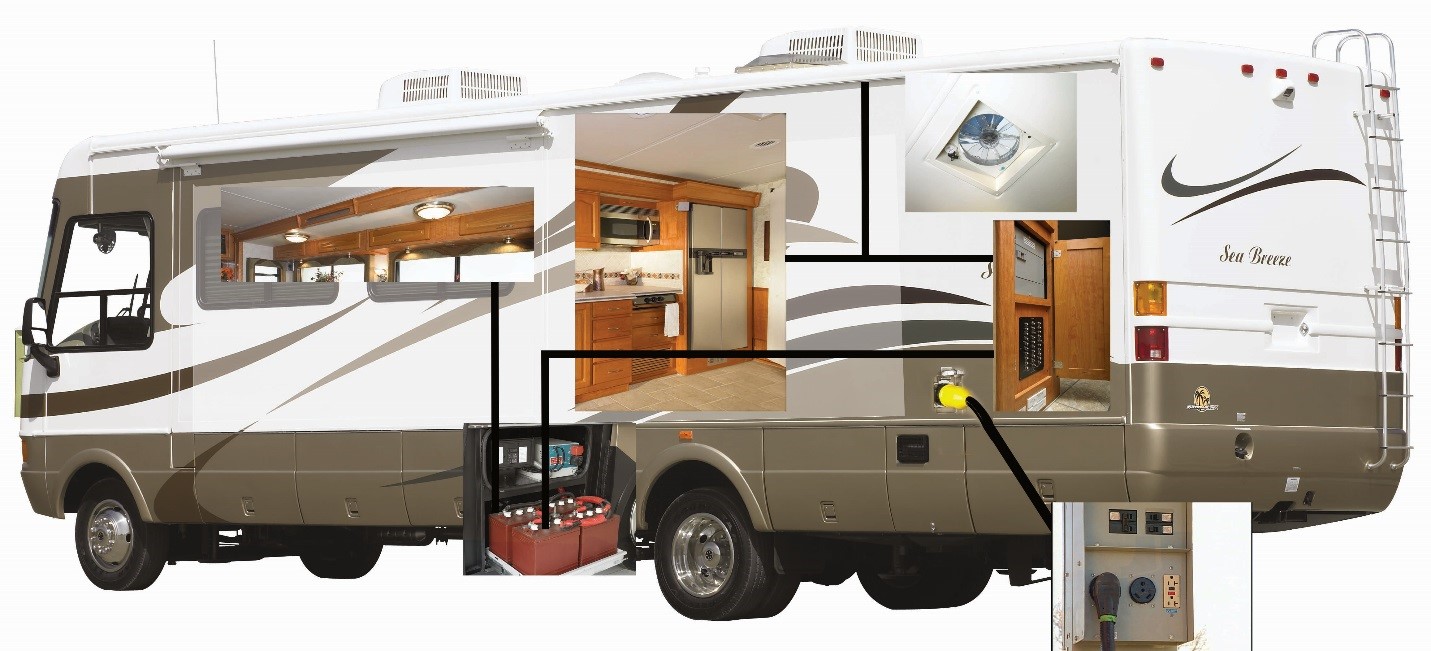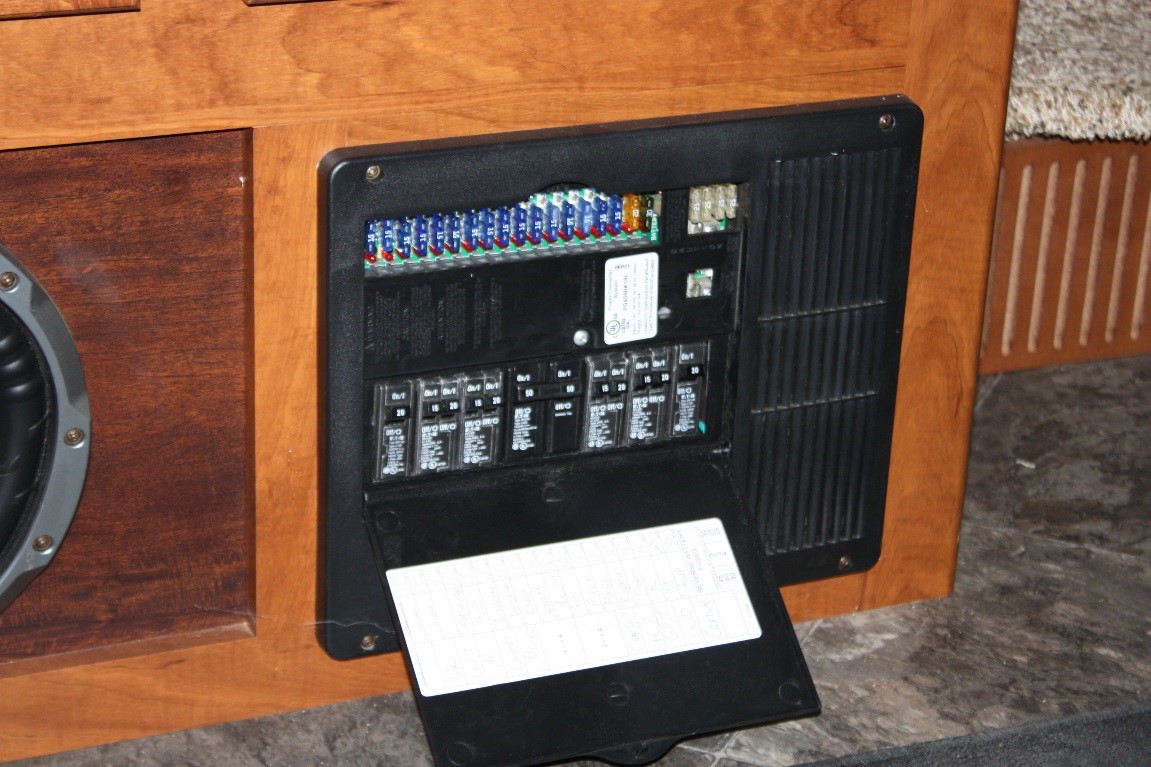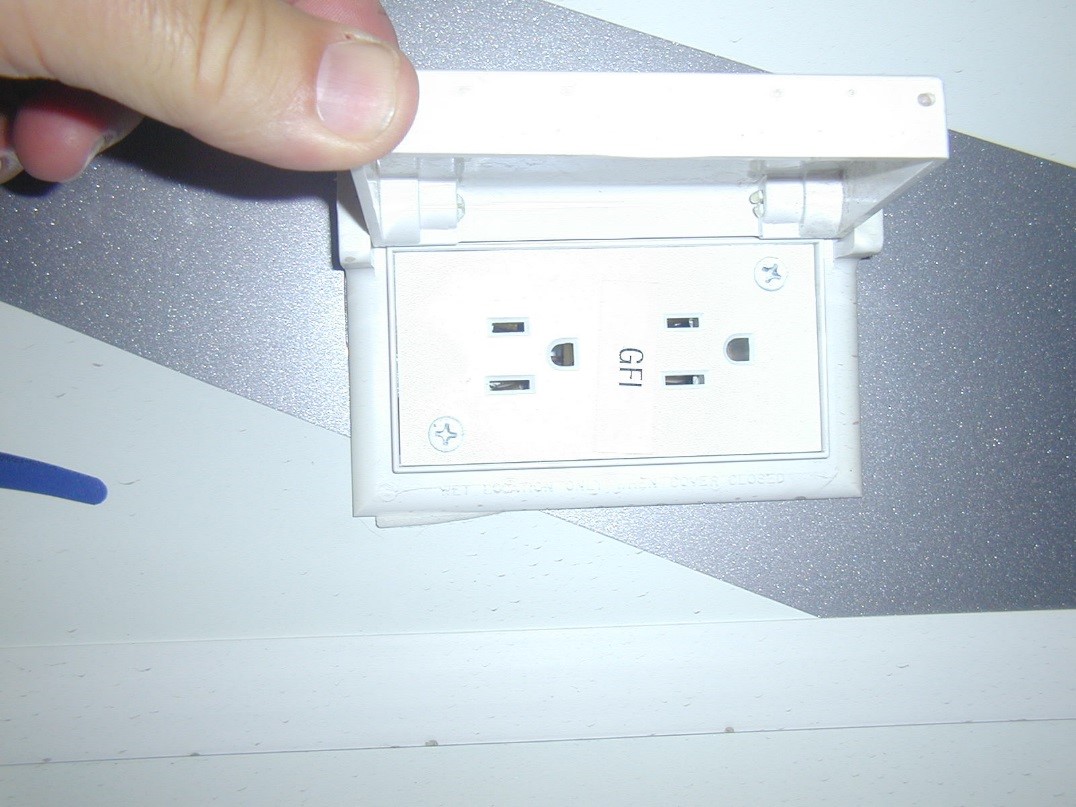Will 120 Volt Service Charge The Aux Battery In1998 Pace Arrow Vision
120-Volt Electrical Basics: Office i
It is important to understand the basics of 120-volt power and how information technology supplies components in your RV. The ability pedestal or "Shoreline Power" at the campground typically has iii connections for 50 amp, 30 amp, and xv amp power.

The 50 amp plug in is for larger coaches to supply 240 volts, 120 volts per "leg" to supply power for two roof air conditioners and other appliances.
The 30 amp plug provides 120-volt power express to 30 amps so typically only one roof air conditioner can be use at a time. The xv amp plug in is similar to a residential outlet and is but used for smaller trailers.

The 120-volt shoreline power comes into your rig to the distribution heart which has a primary breaker then circuit breakers for 120-volt appliances, outlets, and the converter.

Each circuit breaker should be labeled with the component information technology powers and the amp capacity of the breaker. Power is supplied from the distribution center to the appliances and outlets past an electrical normally referred to as Romex that has conductors or wires inside a protective sheeting known as the cable. For nigh appliances there would be three wires, hot, neutral, and basis very similar to the electrical connection in your home.
Any outlet located close to a water source such every bit the kitchen sink, bathroom sink and shower, or outside outlet must be protected past a footing error circuit interrupter or GFCI. This outlet is a device that shuts off an electric power circuit when it detects that electric current is flowing in an unintended path such as through water or a person. It is used to reduce the gamble of electric shock, which can crusade the heart to terminate or cause burns. They can likewise prevent some fires, like when a live wire touches a metal conduit.

Typically RV manufactures will use the recognized GFCI outlet with test/reset buttons in one location, then another Romex wire is connected to that aforementioned GFCI outlet on the second set of terminals and is routed to other outlets which is called "ganged" as there could exist several outlets continued in this aforementioned style but similar the outlets in your garage or living room of your domicile. If y'all have a GFCI outlet at the kickoff connection, all other outlets on the circuit are protected past the GFCI but will commonly non accept the examination/reset button and are known as "dummy plates". They should take a GFCI Protected sticker on them, merely that does not always stay on.

This means you could accept one or two GFCI test/reset outlets on unlike circuits and if that outlets trips, or becomes defective, the other outlets on that "gang" or excursion will non go power. It's a good thought to exam which outlets are on what GFCI chief outlet. Go a not-contact voltage tester from whatever habitation improvement store and press the examination push button on the GFCI outlet. Now employ the non-contact voltage tester to verify what outlets practise non have power. These volition be connected or "ganged" to that outlet.
Dorsum to the distribution console, another 120-volt ability supply goes to the converter or bombardment charger which also has it's own circuit breakers. This provides a 12-volt accuse to the deep wheel house batteries every bit they become depleted and will besides have an amp draw that yous will demand to exist enlightened of if you are on a xv amp or 30 amp shoreline source. Newer models can draw upwardly to 9 amps to provide more charging power merely does limit the use of other appliances on the lower amp systems.
That is an overview of the 120-volt electrical system in your RV. It is like to the fix upwards in your home, with simply a few differences, and the add-on of a 12-volt converter thrown into the mix. Coming up adjacent, we'll learn to sympathize the power power requirements of your rig, and how to manage it!

Will 120 Volt Service Charge The Aux Battery In1998 Pace Arrow Vision,
Source: https://www.rvrepairclub.com/article/120-volt-electrical-basics-part-1/
Posted by: schaffersinut1943.blogspot.com


0 Response to "Will 120 Volt Service Charge The Aux Battery In1998 Pace Arrow Vision"
Post a Comment